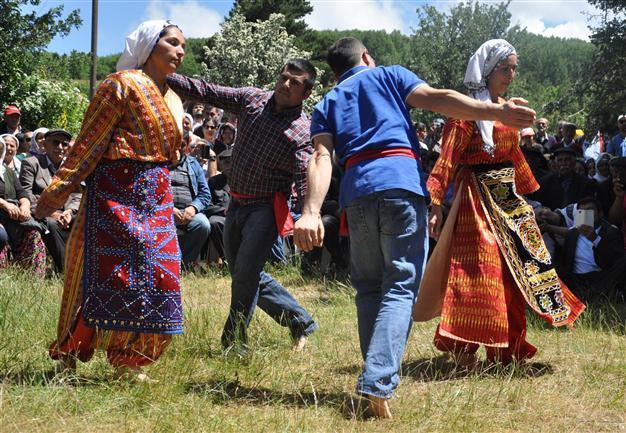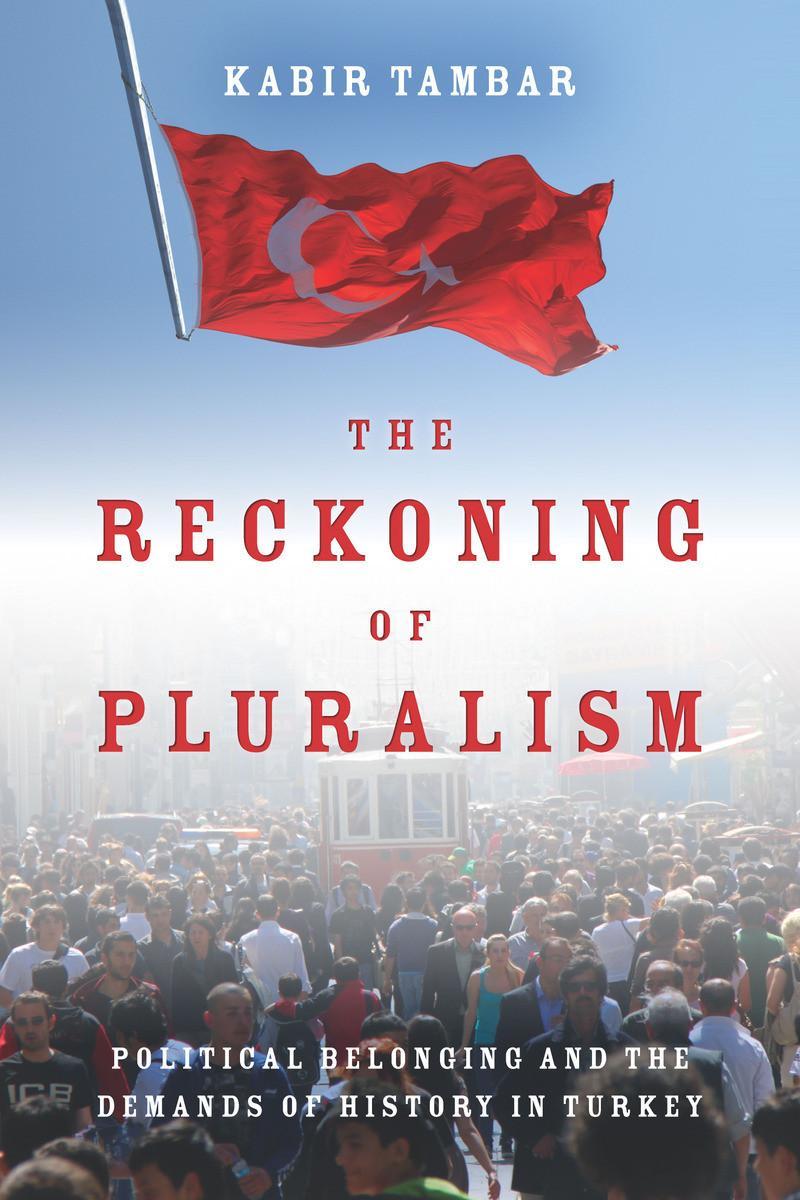Turkey, as many clichéd guidebooks and newspaper op-eds will tell you, is at a “crossroads.” It is also “fast changing.” Clichés they may be, but they do have some truth. Urbanization, particularly rapid over the past 30 years, is one of the motors of Turkey’s much-cited changes, with mass migration to cities profoundly shaping
how many citizens engage with the public sphere.

This is particularly true for Alevis, who are now overwhelmingly concentrated in Turkey’s biggest cities and make up around 15 percent of the country’s population. “Alevi” is actually a catch-all term for a variety of Anatolian ethno-religious minorities with syncretic beliefs and practices, with deep historical connections to Shiite Islamic communities and the Bektaşi Sufi order. Alevism is rooted in rural Anatolia, so the shift to cities over recent decades is particularly noteworthy.
Ostensibly, “The Reckoning of Pluralism” by Stanford University anthropologist Kabir Tamblar examines the tensions of these changes. I say ostensibly because sometimes it is hard to tell; the book is full of unhappy academic gobbledygook. At one point Tamblar asks: “Where might we locate forms of engagement that, rather than remain vocal within the existing dispensation of citizenly participation, challenge the conditions of political enunciation?” At another he ponders: “By means of what sentiments, rhetorics, and practices has historicism’s linear temporality become, not merely legitimate, but required as a condition of intelligibility for constituting a modern political subjectivity?” Elsewhere he tells us: “I analyze these various practices together because it is through their instantiations that we can explore the dense social normativity that produces a historically reflexive Alevi subject and the institutional pressures that compel its emergence.” I don’t want to go on.
It is a shame because the subject is very interesting. Tamblar conducted plenty of on-the-ground research with urban Alevi communities around Turkey, examining how their rural traditions are being reformulated in cities. He also considers modern Alevi history and the ambiguous space that the community has occupied in Turkey’s national consciousness. Many early republican leaders championed Alevis as bearers of “authentic” Turkish national heritage, but they were largely absent from the Kemalist elite cadres. As Tamblar writes in one of his more cogent passages: “Within a context that tacitly conflated political citizenship with ethno-religious identifications, Alevi communities fell within the crevices of the existing categories. They were neither manifestly non-Muslim nor evidently Sunni Muslim.” In 1937-38, the fiercely independent Alevis of Dersim/Tunceli in eastern Anatolia were subjected to a ruthless campaign at the hands of the Turkish military, which killed up to tens of thousands.
Despite such episodes, Alevis have typically been loyal supporters of the Kemalist republic, seeing secularism as their guarantee in an overwhelmingly Sunni country. But they have also been active in leftist and far-leftist groups, particularly prominent in left-wing militias through the 1970s. Such activity was brought to an abrupt halt by the coup of Sept. 12, 1980, after which a “Turkish-Islamic synthesis” was aggressively promoted by the military regime. The idea was to emphasize Turkey’s majority Sunni identity and unite its violently fragmented parts under a conservative, nationalistic and religiously girded sense of Turkishness. At the sharp end of this, Alevis and Kurds were subjected to further assimilation and illiberal disregard.
The section on the effect of the 1980s on Alevis is one of the strongest parts of Tamblar’s book. But even these passages are full of oversights. Tamblar doesn’t once mention the Madımak massacre in Sivas in July 1993, when a fundamentalist Sunni mob burned down a hotel and killed 37 people, mostly Alevis intellectuals who had gathered for a cultural festival. The incident looms large as one of the traumatic milestones for Alevis in contemporary Turkey, so its neglect in this book is inexplicable.
Paradoxically, the state’s increased distrust of Alevis after 1980 came at a time when their public visibility was rising and the old Turkish nationalist ideology was being challenged from many sides. The Directorate of Religious Affairs’ (Diyanet) refusal to extend funding to Alevi religious leaders or Alevi houses of worship (cemevis) remains a source of great controversy. But if Ankara did fund cemevis, (or give them the same tax exemptions already extended to mosques), its leverage would increase and the Alevis’ much-valued independence would be squeezed. Many Alevi associations already complain about state-led assimilation efforts, such as the building of Sunni mosques in Alevi neighborhoods and the heavy Sunni emphasis in the education system. Direct state assistance to Alevi institutions would only tighten pressure on Alevis to conform.
In last month’s general election a comparatively high number of Alevi candidates won parliamentary seats on the CHP and HDP tickets.
Analysts have suggested that Turkey’s Alevi question will be one of its most visible political faultlines in the coming years, while
conspiracy theorists warn of Western powers exploiting Alevis to destabilize the country. Sadly, with its oversights and unintelligible language, “The Reckoning of Pluralism” is a missed opportunity to explore the issue in a satisfying way.
Academic publishing is
said to be going through a golden age. I certainly read plenty of excellent academic texts for this column. Unfortunately, abstruse and needlessly obfuscating books also continue to be published by university presses. Some interesting research lurks below the surface gibberish of “The Reckoning of Pluralism,” but that is not enough to recommend it.
 ‘The Reckoning of Pluralism: Political Belonging and the Demands of History in Turkey’ by Kabir Tambar (Stanford University Press, 232 pages, $25)
‘The Reckoning of Pluralism: Political Belonging and the Demands of History in Turkey’ by Kabir Tambar (Stanford University Press, 232 pages, $25) This is particularly true for Alevis, who are now overwhelmingly concentrated in Turkey’s biggest cities and make up around 15 percent of the country’s population. “Alevi” is actually a catch-all term for a variety of Anatolian ethno-religious minorities with syncretic beliefs and practices, with deep historical connections to Shiite Islamic communities and the Bektaşi Sufi order. Alevism is rooted in rural Anatolia, so the shift to cities over recent decades is particularly noteworthy.
This is particularly true for Alevis, who are now overwhelmingly concentrated in Turkey’s biggest cities and make up around 15 percent of the country’s population. “Alevi” is actually a catch-all term for a variety of Anatolian ethno-religious minorities with syncretic beliefs and practices, with deep historical connections to Shiite Islamic communities and the Bektaşi Sufi order. Alevism is rooted in rural Anatolia, so the shift to cities over recent decades is particularly noteworthy.